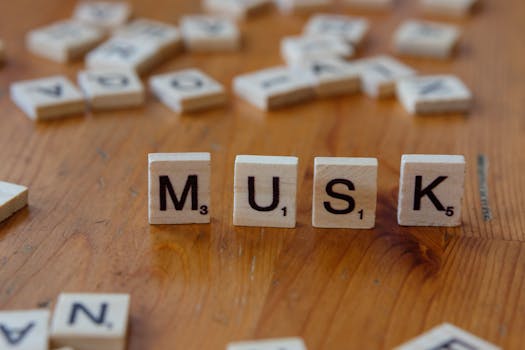
**
The tech world is abuzz with two major developments: Elon Musk's unveiling of Grok, a conversational AI chatbot designed to challenge industry giants like ChatGPT and Bard, and significant investments from the UK and France in OneWeb, a direct competitor to Musk's Starlink satellite internet service. These events highlight a rapidly evolving landscape in artificial intelligence and space-based internet access, setting the stage for intense competition and innovation.
Grok: Musk's Bold Entry into the Conversational AI Arena
Elon Musk's X Corp. (formerly Twitter) recently launched Grok, a highly anticipated AI chatbot powered by xAI, Musk's ambitious artificial intelligence company. Positioned as a more "edgy" and "truth-seeking" alternative to existing chatbots, Grok promises to provide unfiltered responses, even if they are controversial. This stark contrast to the more cautious approaches of other AI developers is a key element of its marketing strategy.
Grok's Key Features and Differentiation:
- Unfiltered Responses: Unlike many competitors that prioritize safety and filter responses, Grok aims to offer uncensored answers, even if they are provocative or challenge conventional wisdom. This bold approach is both its strength and potential weakness.
- Integration with X: Grok is tightly integrated with X, allowing users to access its capabilities directly within the platform. This seamless integration could provide a significant advantage in terms of user acquisition and engagement.
- Data-Driven Decision Making: Grok leverages a massive dataset, learning and adapting constantly, supposedly allowing for more accurate and nuanced responses over time. However, the specifics of its training data remain largely undisclosed, raising concerns about potential biases.
- Premium Access: Currently, Grok is available primarily to X Premium subscribers, creating a monetization model distinct from some of its free competitors. This paywalled approach might limit its initial reach but could also provide valuable feedback from a paying user base.
The launch of Grok immediately sparked discussions about its potential to disrupt the AI chatbot market. Many analysts are scrutinizing its capabilities, comparing its performance to established players like OpenAI's ChatGPT, Google's Bard, and others. The long-term success of Grok will depend heavily on its ability to deliver on its promises of unfiltered accuracy and a superior user experience. The challenge will be balancing this freedom with the need to prevent the generation of harmful or misleading content.
Tesla's AI Advancements and the Future of Autonomous Driving
While Grok dominates the headlines, Tesla's ongoing advancements in artificial intelligence remain crucial to Musk's overall technological vision. Tesla's Autopilot and Full Self-Driving (FSD) systems heavily rely on advanced AI algorithms for object detection, path planning, and decision-making. The data collected from millions of miles of Tesla vehicle driving contributes significantly to the ongoing refinement of these systems.
The Road to Level 5 Autonomy: Challenges and Progress
The quest for fully autonomous vehicles (Level 5 autonomy) presents significant technical hurdles. The complexity of real-world driving scenarios, unpredictable human behavior, and the need for robust safety mechanisms pose ongoing challenges. Tesla's approach, heavily reliant on data-driven learning, is a subject of ongoing debate among industry experts. While impressive progress has been made, fully realizing Level 5 autonomy remains a long-term goal.
The integration of Grok and other AI advancements into Tesla vehicles is a potential future development, potentially enhancing features like in-car entertainment, voice control, and even aspects of autonomous driving. This synergy between Musk's AI ventures and his automotive ambitions could redefine the automotive landscape in the years to come.
Europe's Counter-Move: Investing in OneWeb to Rival Starlink
While Musk pushes boundaries in AI and space exploration with SpaceX's Starlink, Europe is making strategic moves to compete in the satellite internet market. The UK and France recently announced significant investments in OneWeb, a major competitor to Starlink. This strategic investment underscores Europe's desire to build its own independent and resilient satellite broadband infrastructure.
OneWeb's Global Ambitions and the Strategic Importance of Satellite Internet
OneWeb aims to provide high-speed internet access globally, particularly in underserved and remote areas. The investments by the UK and France provide a substantial boost to OneWeb's expansion plans, potentially allowing them to challenge Starlink's dominance in the market. This competition is not just about providing internet access; it also has implications for national security and strategic independence. Having a robust and independent satellite internet network is increasingly viewed as critical for both civilian and military applications.
The Starlink vs. OneWeb Competition: Key Differences and Market Dynamics
While both Starlink and OneWeb offer satellite broadband services, there are key differences in their approaches and target markets. Starlink has achieved broader global coverage with a larger constellation of satellites, while OneWeb focuses on specific regional deployments. The competition between these two giants will likely shape the future of satellite internet access, driving innovation and reducing costs for consumers worldwide. The race to establish global dominance in this crucial sector is far from over.
The intertwined narratives of Grok's AI ambitions, Tesla's autonomous driving advancements, and Europe's investment in OneWeb paint a vivid picture of the rapidly evolving technological landscape. These developments will likely have far-reaching consequences, impacting everything from how we interact with technology to how we connect and travel across the globe. The coming years promise to be an exciting and dynamic period for innovation, competition, and transformative change.




















